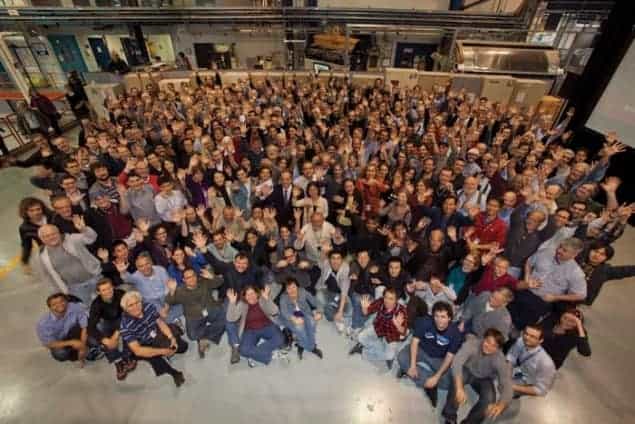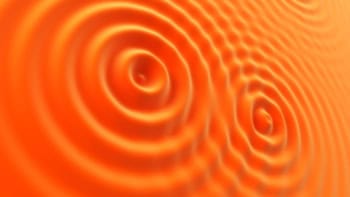Gavin Hesketh reviews Anomaly!: Collider Physics and the Quest for New Phenomena at Fermilab by Tommaso Dorigo

Particle physics is a tricky business. Giant accelerators smash subatomic particles together, while fantastically complicated experiments study the debris for clues about the make-up of the universe. Since the middle of the 20th century, accelerators have become bigger and experiments more sensitive. Almost every jump forward produced a new discovery – the most recent being the Higgs boson at CERN’s Large Hadron Collider (LHC). While the story of the science behind these discoveries has been told several times, there is also a lesser-known, but very human, story to tell. These experiments bring together hundreds or even thousands of people from all over the globe, and navigating the inevitable clashes of style, method and personality is a core skill of the modern particle physicist.
Still, in working towards a common scientific goal, all of these little problems must be solved in a calm, rational way, right? Not a chance. Particle physicist Tommaso Dorigo’s book Anomaly!: Collider Physics and the Quest for New Phenomena at Fermilab takes us back to the 1990s, and covers the first 10 years of the US Collider Detector at Fermilab (CDF) experiment, one of two detectors on the Tevatron particle accelerator – the predecessor to the LHC. This was perhaps the beginnings of “modern” particle physics, from new technologies and computing techniques now considered standard, through to the dynamics of new large international collaborations. But unlike many books about particle physics, Dorigo offers a glimpse into the working life of some of the 600-strong team on CDF, and the handful of characters trying to steer the ship – often in different directions.
In the first half of the book, Dorigo shares some classic tales from the construction of CDF, and the early fight for recognition on the international stage. It’s clear that there is more than science at stake here, and Dorigo sets up a moment of real tension as CDF scientists race to publish a result that beats the competition and makes their name. Then, attention turns to the hunt for the top quark, the heaviest particle we know. Discoveries like this may come along only once or twice in a lifetime, so being one of the lead scientists can make a career. The book details how factions formed within CDF, with large groups and larger egos fighting for the glory. Competition with D0, the other experiment at the Tevatron accelerator (and my home for several years), adds to the pressure, and the cracks begin to show. Dorigo is not here to airbrush history – instead, he delights in dishing the dirt on the internal fights that border on industrial espionage: computer scripts that hog resources so other groups cannot work; new ideas being buried under a mountain of questions and requests for cross-checks. This peek behind the curtain at the (mal)functioning of a particle-physics experiment will be surprising to anyone not familiar with the field.
There are some real gems of particle-physics folklore in here. But, like many good ideas in the hunt for the top quark, they are buried under a mountain of unnecessary technical detail, and herein lies the problem I found with this book. The warning signs come early in the “introductory” chapters: the third paragraph in the book is already discussing the vectorial analysis of angular momentum and its quantum analogue. Given that the human stories here provide such great material – and are what make this book unique – I wish Dorigo had focused more on those. Instead, I found myself skipping pages on the interminable meetings, points of procedure, unnecessary technical lingo, and the minutiae of muon triggers and Monte Carlo scale factors. Yes, these details do take up a large part of the daily life of a particle physicist, but if you don’t already know what these things are and how important they can be, I’m not sure this book will give you an appreciation for them.
This is particularly true in the second half, which promises the real controversy (i.e. the really interesting stuff) as it moves from the discovery of the top quark on to the other, more speculative claims that followed. One character, Paolo Giromini, emerges as an agent provocateur in this play, reigniting old fights while refusing to play by the rules. We get a portrait of him dominating the corridors of the CDF offices, ridiculing colleagues, challenging the accepted views while remaining secretive and obstinate in his methods. Is he producing good science or not? It isn’t clear, but with the best theorists in the world putting pressure on the Tevatron experiments to hunt for new particles, Giromini makes claim after claim that he has already found them. The problem is that hardly anyone else at CDF believes him.
At this point, Dorigo himself becomes one of the main actors in the story, and it is clear we are hearing his side of what must have been extremely difficult decisions in how to deal with Giromini’s claims. There is plenty of food for thought here, and given that these events happened 20 years ago, more reflection would have been welcome. Do people like Giromini play a useful role in large collaborations to keep everyone on their toes, or are they just a distraction? When the media catch on to the rumours of a potential discovery, does the prospect of a quick headline interfere with the scientific process?
Given that none of Giromini’s claims have stood the test of time, were his fellow CDF scientists right to be cautious? These are fascinating topics that remain relevant to particle physics and many other areas of science today. But as Dorigo’s narrative remains fixed in the moment, many episodes in the book remain unresolved and the implications unexplored. In the end, this felt like a missed opportunity to tell a fascinating tale of life on the cutting edge of science.
- 2016 World Scientific Publishing Company 304pp £40pb



